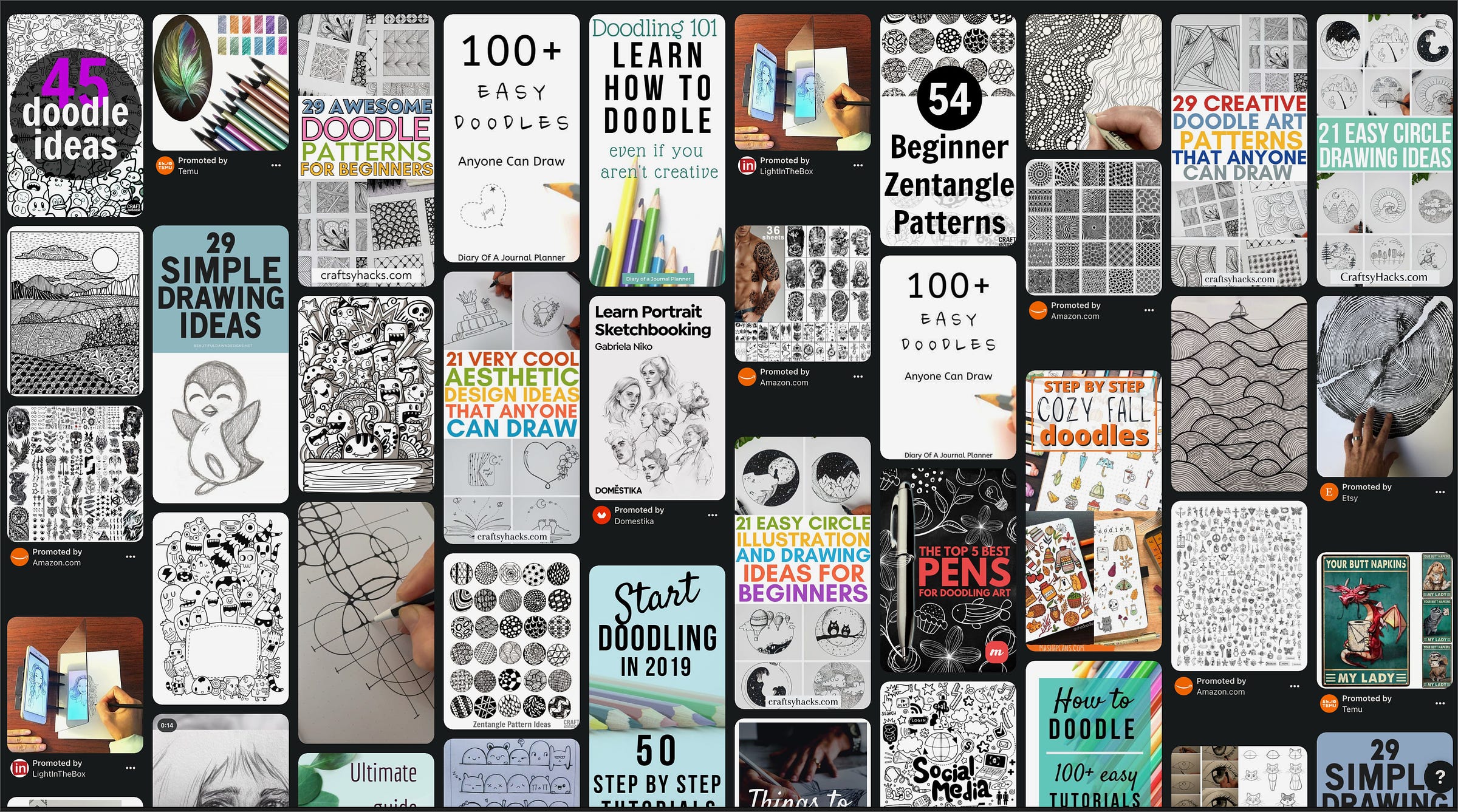I Want an Apology From All My Teachers . . .
…who confiscated my etchings, mazes and caricatures during class.
Unfortunately, the latter were good enough it was clear who my model had been. And so, let me just say right now, Miss Looney, that you were not quite as dowdy as depicted and you did not have that much of a mustache, really, and I apologize.

Furthermore, I want you to know, now with supporting documentation, that you had my almost-full attention in that 7th period english class, and my overdone squiggly marginalia really did—and still does—help me think and remember better.
The “art-making” I created with my four-color ballpoint pen looked at first glance like the mindless ramblings of a totally bored honors english student. Or math. Or biology. Especially biology.
And to this day, I doodle in civic meetings or at conferences; and of COURSE on Zoom calls I doodle like crazy, since Miss Looney can’t climb out of the monitor and hold me up to ridicule.
FACT: I was something of a class hero there for a while, and my friends would queue up after class to see what I had etched out whilst we were clumsily reciting Chaucer in middle English with ah-wah thick Alabama accents.

This mindless art-like busy-ness is rewarding in its own right. It is not just pleasurable but also has multiple other benefits. According to the Drexel study reported in INC magazine:
The activities included coloring in a mandala, doodling within or around a circle marked on a paper, and having a free-drawing session, each for three minutes, with rest periods in between. During all three activities, there was an increase in blood flow in the prefrontal cortex of the brain, which forms a part of the wiring for our brain’s reward circuit.
“This shows that there might be inherent pleasure in doing art activities independent of the end results,” said the study’s lead author.
But in addition to it being kind of fun, it lubricates the cerebral gears.
According to surveys before and after the art-making activities, participants who engaged in art-making felt more creative and were better able to solve problems. These findings have important implications and highlight the inherent benefits of art in promoting creativity, focus, productivity, and well-being.
And of all these artsy activities, DOODLING wins the prize.
Anyone can do it. Watch: Your mind selects three or four key words from the lecture you’re listening to, and your pen puts them in boxes. Arrows show relationships. This is going somewhere. Then slowly the flow-chart becomes a mandala of hieroglyphic shapes, and the original keywords are lavishly overgrown like a long-lost Inca pyramid overtaken by the Guatemalan jungle.
WARNING: the doodler can be perceived as bored; inattentive, disrespectful. And his high school GPA could suffer.
The very idea! Hillary Clinton was caught doodling on her prepared remarks on Middle East peace and security at a UN Security Council speech! Lock. Her. UP! She was doodling. The very idea!
Let’s face it: The noun or verb DOODLE has a checkered past, according to Sunni Brown:
In the 17th century, doodle was a simpleton or a fool — as in Yankee Doodle. In the 18th century, it became a verb, and it meant to swindle or ridicule or to make fun of someone. In the 19th century, it was a corrupt politician. And today, we have what is perhaps our most offensive definition, at least to me, which is the following: To doodle officially means to dawdle, to dilly dally, to monkey around, to make meaningless marks, to do something of little value, substance or import, and — my personal favorite — to do nothing. No wonder people are averse to doodling at work. Doing nothing at work is akin to masturbating at work; it’s totally inappropriate.
The time has come to redeem the doodle (noun or verb!)
So cut Hillary—and ME!—some slack. The science vindicates previously-condemned doodlers. Society will no longer vote us off the island. Just pick up a four-colored pen and join us creating “visual language.” Why?
As you shop for those hard-to-buy-for younger or older folks on your Christmas list, think about gifting them a nice 12-pack of colored pens, suitable for taking exhaustive notes at their next UN General Assembly meeting, while funking up the flags of Dunnundastan and Isnotsobad in the marginalia, and the doodling mind soars free!
RESOURCES
7 Ways Doodling will Change your life
The Science of Doodling—Drexel U
The thinking benefits of Doodling—Harvard U
How Doodling Benefits Mind and Body—skillshare
Doodlers Unite! Ted Talk Sunni Brown 2011
 – Fred First is an author, naturalist, photographer watching Nature under siege since the first Earth Day. Cautiously hopeful. Writing to think it through. Thanks for joining me. Subscribe to My Substack HERE
– Fred First is an author, naturalist, photographer watching Nature under siege since the first Earth Day. Cautiously hopeful. Writing to think it through. Thanks for joining me. Subscribe to My Substack HERE
